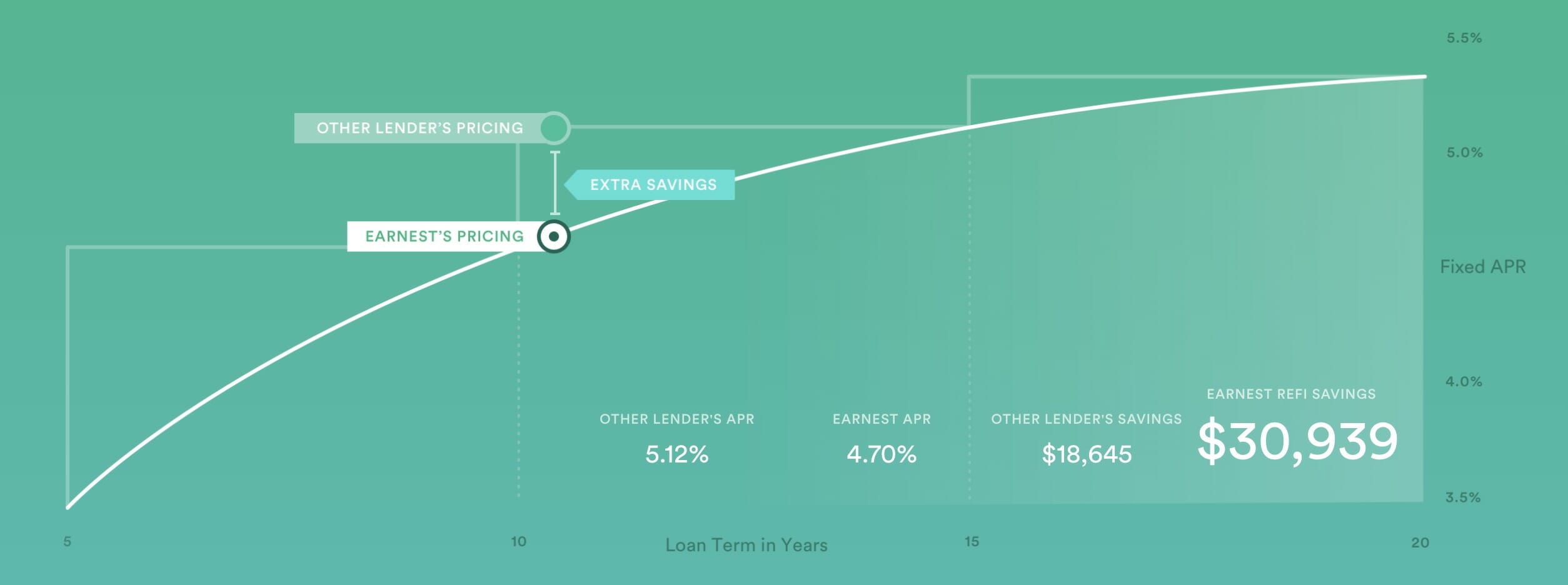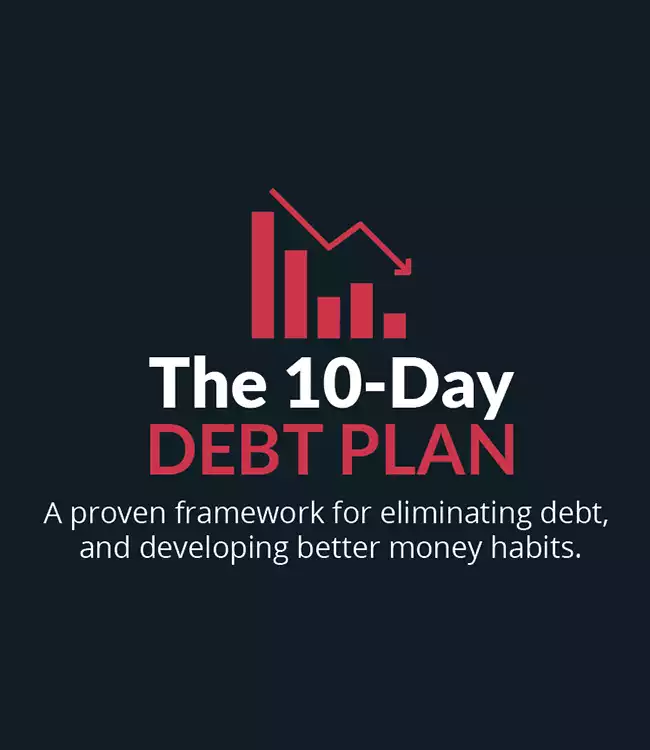Millions of Americans struggle with student loan debt, but some of that struggle might be unnecessary. That got your attention! Read on and see if you are one of the lucky ones with our student loan forgiveness: the complete 2018 guide.
It’s a Lot of Millions
And just over a trillion. 44 million Americans have student loan debt totaling $1.48 trillion. That’s trillion with a T. 11% of those with student loan debt are in default. Even credit card debt is less than student loan debt.
And all that debt has big consequences because when all of your money is going to debt, you aren’t spending or saving.
The Federal Reserve Board of Washington, D.C. found that an increase in student debt has led to a decrease in home ownership, and a study from NerdWallet predicts that students who graduated from college in 2015 will have to delay retirement until the age of 75, in part because of the increasing burden of student debt.
How Did We Get Here?
So how did it come to this? If your parents attended college, they probably didn’t graduate with debt. So why today do 70% of college graduates have student loan debt?
Even in 2006, just twelve years ago, outstanding student loan debt was “just” $447 billion. It was a lot but nowhere near as stratospheric as it is now. How did we get here? Student loan debt is due to a few factors.
Tuition Skyrocketed
A little perspective. If the price of a new car had increased at the same rate college tuition increased over the past thirty years, a new card would cost $80,000.
It seems like cost rose almost overnight, but this has been building for decades. Some experts have pinpointed 1970 as the beginning of ever-increasing college tuition. Double-digit inflation, the oil crisis, and a flagging economy meant that family income declined.
At the same time, public investment in higher education fell. As a result, colleges increased the cost of tuition. Hence families were now forced to borrow money to finance college.
But that doesn’t account for the continued gouging of tuition prices. Legislative appropriations for higher education is almost ten times higher now than in 1960. But the largess is spread thinner because so many more people are attending college. College enrollment has increased by almost 50% since 1995.
Congress Changed the Rules
Before 1976, student loan debt could be discharged in bankruptcy. Starting in 1978, Congress made a series of reforms to bankruptcy laws. As a result, by 1984, it became nearly impossible to have student loans written off under bankruptcy.
As a result, lenders started doling out money like Halloween candy because they knew that borrowers would be forced to pay back student loans in almost all circumstances. As a result of all this, we have the situation we’re in now.
Does this sound familiar? It should because it’s similar to what happened during the housing crisis. Mortgage lenders gave loans to anyone with a pulse. As a result, the housing bubble burst, and it resulted in the 2008 recession.
Some economists speculate that all of these student loans will affect the economy much as all those subprime mortgages did. Therefore, student loans will be the next bubble to burst.
This free course outlines a proven framework that thousands of people have used to eliminate their debt, develop better money habits, and start building a secure financial future.
So What Are Your Options?

There are several options for student loan forgiveness. Many of these are Obama student loan forgiveness programs. As the current president seems hell-bent on dismantling anything Obama did, these programs may not be around for long.
In addition, Grizzly Betsy is at the helm of the DOE. Therefore if you are eligible for any of them, you should probably get a move on while you can.
If you aren’t eligible for any of them, you still have options. There are ways to lower your monthly payment and interest rate.
Public Service Loan Forgiveness
PSLF provides student loan forgiveness in exchange for working in a public service field. To qualify, you must make your loan payments for ten years under a qualifying plan. Those plans include Income-Based Repayment, Pay As You Earn Repayment, Revised Pay As You Earn, Income Contingent and Standard Repayment.
Who is Eligible?
Being eligible for PSLV depends on whom your employer is, furthermore you must be a full-time employee. Qualifying employers include:
- Federal, state, local or tribal government organizations
- Organizations considered not for profit, and that are tax-exempt under Section 501(c)(3) of the IRS code
- Not for profit organizations not tax-exempt under Section 501(c)(3) of the IRS code, provided their primary purpose is providing specific kinds of qualifying public services
- Ful time AmeriCorps or Peace Corps volunteers
Eligible Loans
- Direct Subsidized and Unsubsidized Loans
- Direct PLUS Loans
- Direct Consolidation Loans
- Federal Perkins Loans and Family Education Loans that have been consolidated through a Direct Consolidation Loan
How to Apply
Each year you must submit an Employment Certification Form. FedLoan Servicing will review the form to determine if you are eligible. Furthermore, you may be required to provide additional information like tax returns and pay stubs.
If you are eligible, FedLoan Servicing will let you know how many qualifying payments you have already made and how many more you have to make to qualify for the remaining loan balance to be forgiven.
Education is not preparation for life; education is life itself.
Tweet ThisIncome Based Repayment Forgiveness
IBR limits the amount of your student loan payments to 10-15% of your discretionary income. Once you have made on-time payments for 20-25 years (the number of years of required payments depends on what year the loans were disbursed) the remainder of your loans will be forgiven.
Who is Eligible?
To qualify, your IBR payments must be lower than what they would be under a Standard Repayment Plan. The Repayment Estimator at Studentloans.gov will show you if you meet that requirement.
Eligible Loans
- Direct Subsidized and Unsubsidized Loans
- Direct Grad PLUS loans
- Subsidized and Unsubsidized FFEL Stafford Loans
- FFEL PLUS Loans made to grad students
- Consolidated Federal Perkins Loans
- Direct Consolidation Loans, unless they were used to repay Parent PLUS Loans or FFEL Loans made to parents
How to Apply
Borrowers can apply online at StudentLoans.gov or get an application from the company who services the loan. There may also be additional documentation required like tax returns and pay stubs.
Be aware that loan amounts forgiven under IBRF is considered income and taxed as such.
Pay As You Earn Forgiveness

PAYE limits the amount of your student loan payments to 10% of your discretionary income. The PAYE Forgiveness Plan allows borrowers who have made on time payments for 20 years to have their remaining loans forgiven.
Who is Eligible?
To qualify, your IBR payments must be lower than what they would be under a Standard Repayment Plan.
Eligible Loans
- Direct Subsidized and Unsubsidized Loans
- Direct Grad PLUS loans
- Consolidated Subsidized and Unsubsidized FFEL Stafford Loans
- Consolidated FFEL Loans made to grad students
- Consolidated Federal Perkins Loans
- Direct Consolidation Loans, unless they repaid Parent PLUS Loans or FFEL Loans made to parents
How to Apply
Borrowers can apply online at StudentLoans.gov or get an application from the company who services your loan. There may also be additional documentation required like tax returns and pay stubs.
Revised Pay As You Earn Forgiveness
RPAYE limits student loan payments to 10% of discretionary income. Undergraduate loans are forgiven after 20 years of on-time payments and graduate loans after 25 years.
Unlike IBR and PAYE, however, there’s no income eligibility requirement to get on REPAYE.
Who is Eligible?
As long as you have qualifying loans, you are eligible.
Eligible Loans
- Direct Subsidized and Unsubsidized Loans
- Direct Grad PLUS loans
- Consolidated FFEL Stafford Loans
- Consolidated FFEL PLUS Loans made to grad students,
- Consolidated Federal Perkins Loans
- Direct Consolidation Loans, unless they repaid Parent PLUS Loans or FFEL Loans made to parents
How to Apply
Borrowers can apply online at StudentLoans.gov or get an application from the company who services your loan. There may also be additional documentation required like tax returns and pay stubs.
Income-Contingent Repayment Forgiveness
ICR limits student loan payments to 20% of discretionary income or the amount paid with a fixed 12-year plan, whichever is less. Once borrowers have made on time payments for 25 years, the remaining loan is forgiven.
Who is Eligible?
As long as you have qualifying loans, you are eligible.
Eligible Loans
- Direct Subsidized and Unsubsidized Loans
- Direct PLUS Loans made to grad students
- Direct Consolidation Loans
- Consolidated FFEL Stafford Loans
- Consolidated FFEL Loans made to parents
- Consolidated Parent PLUS Loans
- Consolidated Federal Perkins Loans
How to Apply
Borrowers can apply online at StudentLoans.gov or get an application from the company who services your loan. There may also be additional documentation required like tax returns and pay stubs.
Federal Perkins Loans Cancellation and Discharge
This program forgives a certain percentage of a borrower’s student loan debt for each year of service. Borrowers must have worked full time for one year or more in an eligible field.
Who is Eligible?
This program is occupation dependent. Eligible occupations include education and public service careers like nurses, military, and law enforcement, and public defenders.
Eligible Loans
Well, Federal Perkins Loans!
How to Apply
You can obtain the application forms from the school that made the loan or the school’s Perkins Loan servicer.
Occupation Specific Student Loan Forgiveness Programs

If you don’t qualify under any of the above programs, you may be eligible for another student loan forgiveness program specific to your career.
Student Loan Forgiveness for Teachers
If you work in an eligible school for five years or more, you may qualify under this program. The amounts forgiven are not enormous; up to $5,000 for elementary teachers and up to $17,500 for secondary school teachers in special education, math, or science.
Who is Eligible?
- Your loans were disbursed prior to Oct. 1, 1998
- Your loans are in good standing
- You have state certification or a teaching license.
Eligible Loans
- Subsidized and Unsubsidized Direct Loans
- Subsidized and Unsubsidized Federal Stafford Loans
How to Apply
After teaching for five years, you can apply for teacher loan forgiveness by completing the Teacher Loan Forgiveness Application. Return your application to your loan servicer.
Nurse Corps Loan Repayment Program
The Nurse Corps Loan Repayment Program will forgive up to 60% of your student loans if you have worked as a nurse for two years. After a third year, you may qualify for another 25% of your loan to be forgiven.
Who is Eligible?
To be eligible, you must work in an underserved area for a high needs population. The program is open to RNs, NPs and nurse faculty members at an accredited nursing school.
Eligible Loans
- Grad PLUS loans
- Perkins loans
- Stafford loans
- Private student loans
How to Apply
Applications have a deadline which has passed for 2018. You can apply next year here.
None of These Apply To You
If you aren’t eligible for any of these student loan forgiveness programs, don’t despair! You may be able to refinance your loans. Refinancing saves you money as a result of the lower interest rate on the new loan.
In addition, if you are struggling to make your monthly payments, you can extend the terms of the loan. It may cost more in interest over time due to the longer life of the loan but doing so can give you some breathing room.
Companies like Earnest and their partners offer lower interest rates.

A variable rate loan seems like the way to go due to the low-interest rate. And it can be. If you are able to pay the loan off quickly as a result of increasing income, the risk might be worth it. You can pay the loan off before interest rates increase.
If you are unsure that you will make more money in the very near future or just like a sure thing, than stick with a fixed rate loan.
It Was Still Worth It
If you are drowning in student loan debt, it sometimes seems like maybe getting a college degree wasn’t worth it. It was. Because the average college graduate will make $1 million more over the course of their career than those with only a high school diploma.
Furthermore, going to college has benefits that go beyond the financial. There are less tangible things in addition to that million.
You made lifelong friends, career connections, maybe even met your spouse. And if you did it right, also had a blast. But most of all, college exposes you to new people and new ways of thinking.
So keep your chin up. Even if you are kicking yourself for taking out student loans now. Because in the future, you will be glad you did.

